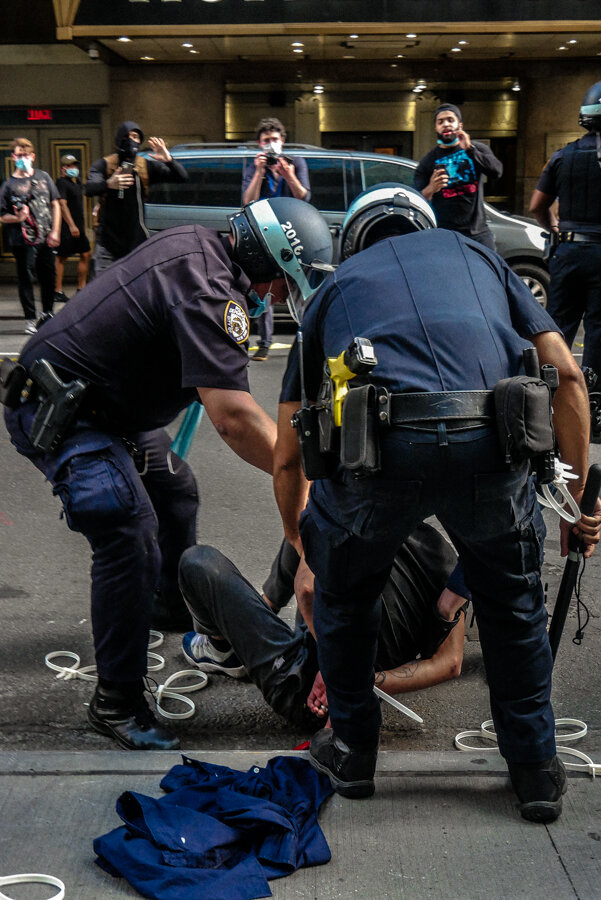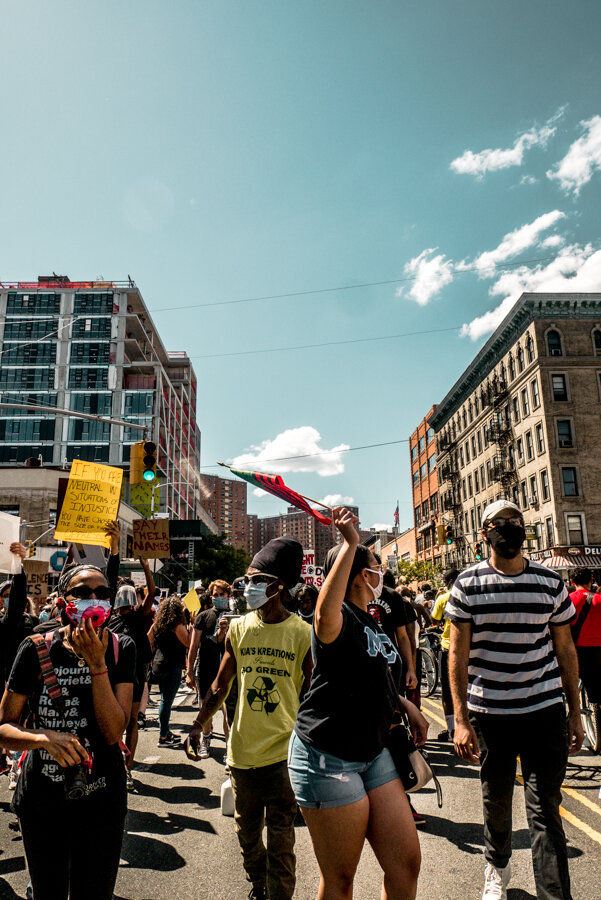Black tattoo artist Kilo poured boiling water onto his chest when he was two.
“I feel like it sort of set into motion the idea of harm and death always being around,” he said in a calm, reassuring voice.
His mother was boiling hot dogs to feed his sister. He flatlined in the ambulance.
“My mom said I was looking for food,” he remembers.
One of the EMTs gave him a stuffed puppy to comfort him. He held it so tight that it fused to the raw skin on his chest, and he had to go back into surgery for them to be separated.
He got a life lesson that not many two-year-olds get. This formative experience was the backdrop to the gospel his grandmother nailed into him.
Life and death
“Everything isn’t forever, not even me. I was almost nothing.”
It gave Kilo a sense of awareness and acceptance, which presents itself in his artwork combined with childhood nostalgia.
“Just being a kid growing up, all I ever thought about was just dying; one day having to die.”
His artwork invites viewers into a conversation about the taboo of death.
“I like to use death within my pieces because it’s the ultimate reminder that, though I’m creating this artwork that’s gonna last forever, the artist themself won’t last forever,” he said.
Flipping the taboo as a Black tattoo artist
“When it comes to me and who I am and who I seek to be in this world and get done, I always like the idea of not being there forever to be synonymous with me. I feel that everything in life is temporary; and to truly gain, you have to be willing to lose and risk it all,” he said to me over the phone.
I was taken aback by the power of the black tattoo artist and his words. Then and there, I tried to gather my thoughts for my next question.
“Yes, I know,” he said, and we both giggled. “I’m on this mode all the time, so thanks for calling.”
Though you might assume work about death would be rife with blood, gore, and suffering, Kilo’s visual style flips that on its head. As a kid, he loved watching cartoons. Kilo’s tattoos reflect this.
Love for cartoons
“They’re drawn out stories with exaggerated colors,” he said.
He mimics this in his art: neon colors animate playful 90’s cartoon characters, and smiley faced “Kool Kids,” whose melancholic puppydog eyes and grimaces stare out at viewers from his clients’ arms, backs, chests and legs. He tries to evoke a childlike expression which he describes as “the innocence of creating.”
“It kinda came to mind that if I did anything with art, I wanted it to be moving; whether it be a cartoon or art on a person,” he said. For him, that’s what makes art real.
That’s why angels, flowers, butterflies, and the Kool Kids with the lining and shading of the drawings of a student sitting in the back of class mark his brand.
“It just reminds me of not paying attention in class, just drawing on someone that’s like, ‘can you draw on me next?’ There’s a little line of classmates. Everybody is classmates in this world and we’re all just learning.”
View this post on Instagramyou say i’ve made your life a living hell, and yet still let me pay you when i felt…🦋
More to Kilo’s tattoo art
Kilo says that’s also why he likes stick-and-poke tattooing so much.
“It’s true intimacy between me and another person. Two physical bodies doing something in a productive manner but for some outward reason. It makes me think of cavemen building the wheel together, which is also very true primitive artistic form.”
To Kilo, the artistic spirit of tattooing has a deeper meaning.
“To most people, they probably think of me as just being a tattooer, but I feel like, in some way, I’m some sort of art therapist, or like a life coach. There’s always something to gain from an interaction from someone else. I always go into an interaction with the expectancy to give as well,” he said.
“I don’t really feel like I’m speaking for myself. I feel like I’m explaining the blessings that I receive in life, trying to show somebody the recipe of how I got those same blessings. That’s why I do my art.”



















